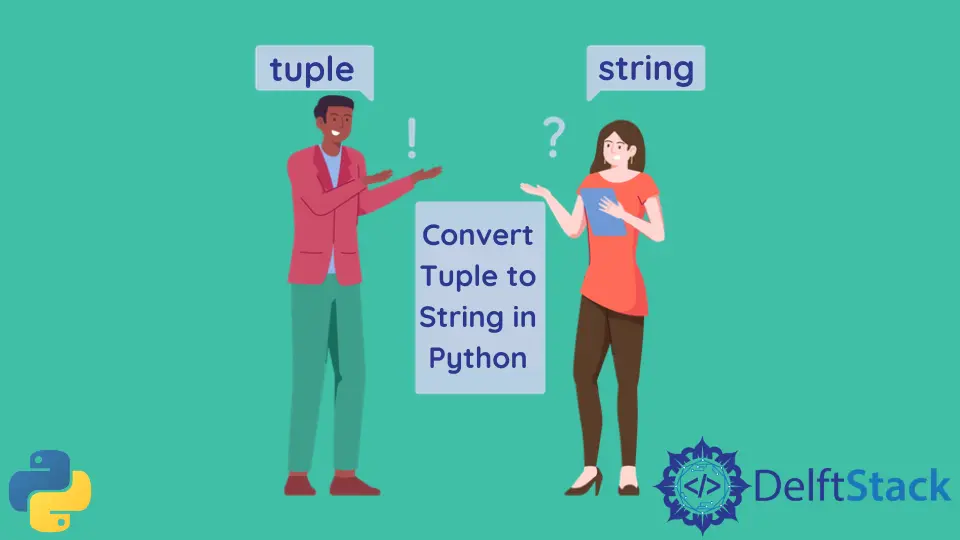在 Python 中将元组转换为字符串
Vaibhhav Khetarpal
2021年4月29日

在 Python 中,可以使用元组将多个项目存储在单个变量中。字符串可以定义为用单引号或双引号引起来的字符簇。
本教程将讨论在 Python 中将元组转换为字符串的不同方法。
在 Python 中使用 str.join() 函数将元组转换为字符串
顾名思义,join() 函数用于返回一个字符串,该字符串包含由 str 分隔符连接的所有序列元素。
我们使用 join() 函数在输入元组中添加所有字符,然后将其转换为字符串。
以下代码使用 str.join() 函数将元组转换为字符串。
tup1 = ("h", "e", "l", "l", "o")
# Use str.join() to convert tuple to string.
str = "".join(tup1)
print(str)
输出:
hello
分隔符(如逗号)也可以添加到转换后的字符串中。以下代码使用带有分隔符 , 的 str.join() 方法将元组转换为字符串。
tup1 = ("h", "e", "l", "l", "o")
# Use str.join() to convert tuple to string.
str = ",".join(tup1)
print(str)
输出:
h,e,l,l,o
在 Python 中使用 reduce() 函数将元组转换为字符串
reduce(fun, seq) 函数用于应用在传递的序列中引用的整个列表组件中传递的特定函数。
在这种方法中,我们需要导入 functools 和 operator 模块以成功运行代码。
functools 模块提供了使高阶函数可以在其他函数上工作的功能。
以下代码使用 reduce() 函数将元组转换为字符串。
import functools
import operator
tup1 = ("h", "e", "l", "l", "o")
# Use reduce() to convert tuple to string.
str = functools.reduce(operator.add, (tup1))
print(str)
输出:
hello
在 Python 中使用 for 循环将元组转换为字符串
一个基本的 for 循环也可以用于遍历元组中的所有元素,然后将这些元素附加到字符串中。
我们使用一个元组和一个空字符串。元组的所有元素都被迭代以附加到空字符串中。
以下代码使用 for 循环在 Python 中将元组转换为字符串。
tup1 = ("h", "e", "l", "l", "o")
str = ""
# Use for loop to convert tuple to string.
for item in tup1:
str = str + item
print(str)
输出:
hello
Vaibhhav is an IT professional who has a strong-hold in Python programming and various projects under his belt. He has an eagerness to discover new things and is a quick learner.
LinkedIn